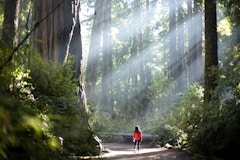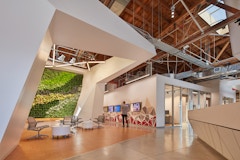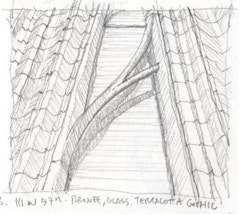A circular approach to facade design
The built environment has a significant impact on our natural environment, depleting non-renewable resources, overwhelming landfill sites, and
The built environment has a significant impact on our natural environment, depleting non-renewable resources, overwhelming landfill sites, and

In this Pulitzer Prize winning novel by Richard Powers a series of fables is woven through a narrative populated by an expansive cast of unlikely characters, trees paramount among them; one a giant redwood named Mimas. Redwoods can live for thousands of years and grow to well over 300 feet tall.

Special guests Jennifer O'Connor from Athena Sustainable Materials Institute, Anthony Pak from Priopta, and Stacy Smedley from Skanska join us to discuss embodied carbon.

Special guest Ted Kesik, PhD, Professor of Building Science at the University of Toronto, joins us to discuss everything from digital workflows and durability to embodied carbon and resilience.

The next PowerSKIN Conference will be held virtually in Munich on April 9th. The focus of the 2021 conference deals with the question of whether simplicity and robustness are in contradiction to good performance or whether they even complement each other: Simplicity vs. Performance?

The Net Zero Webinar Series is an ongoing platform for you to expand your knowledge of innovations and trends in climate, carbon, energy, water, waste, and transit as we work together to build a net zero future for all people.

The Net Zero Webinar Series is an ongoing platform for you to expand your knowledge of innovations and trends in climate, carbon, energy, water, waste, and transit as we work together to build a net zero future for all people.

The journey to a zero net energy (ZNE) future starts with renovating the current paradigm of building design. The way buildings are designed today needs a retrofit in thinking so new projects meet the challenges of the global climate crisis.

The journey to a zero net energy (ZNE) future starts with renovating the current paradigm of building design. The way buildings are designed today needs a retrofit in thinking so new projects meet the challenges of the global climate crisis.

The journey to a zero net energy (ZNE) future starts with renovating the current paradigm of building design. The way buildings are designed today needs a retrofit in thinking so new projects meet the challenges of the global climate crisis.

The journey to a zero net energy (ZNE) future starts with renovating the current paradigm of building design. The way buildings are designed today needs a retrofit in thinking so new projects meet the challenges of the global climate crisis.

The journey to a zero net energy (ZNE) future starts with renovating the current paradigm of building design. The way buildings are designed today needs a retrofit in thinking so new projects meet the challenges of the global climate crisis.

The journey to a zero net energy (ZNE) future starts with renovating the current paradigm of building design. The way buildings are designed today needs a retrofit in thinking so new projects meet the challenges of the global climate crisis.

The Net Zero Webinar Series is an ongoing platform for you to expand your knowledge of innovations and trends in climate, carbon, energy, water, waste, and transit as we work together to build a net zero future for all people.

With net zero and carbon neutral mandates on the near horizon, New York City has pushed the green building envelope by leveraging incentive-based

The conventional modern facade is essentially flat, which creates the tendency toward visual monotony and problems for modulating daylight—both on


